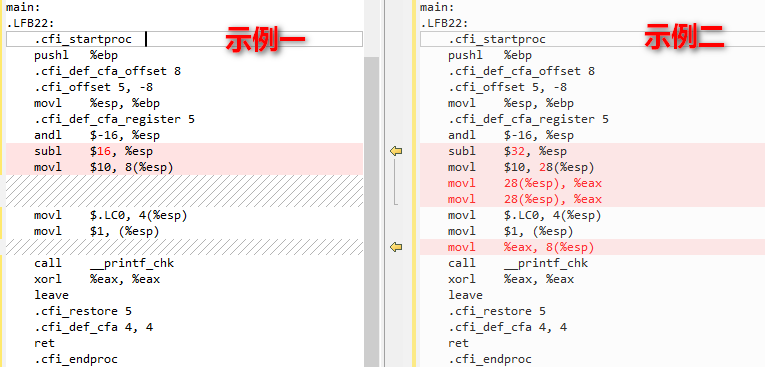volatile 介绍
表示一个变量也许会被后台程序改变,关键字 volatile 是与 const 绝对对立的。它指示一个变量也许会被某种方式修改,这种方式按照正常程序流程分析是无法预知的(例如,一个变量也许会被一个中断服务程序所修改)。
变量如果加了 volatile 修饰,则会从内存重新装载内容,而不是直接从寄存器拷贝内容。
为什么使用 volatile
volatile 的作用 是作为指令关键字,确保本条指令不会因编译器的优化而省略,且要求每次直接读值。
现在考虑一个问题,编译器如何对代码进行优化的?
我们看一个例子:
1 | //示例一 |
1 | //编译优化、查看汇编 |
1 | //示例二 |
1 | //编译优化、查看汇编 |
比较:
可以清楚的看到:使用 volatile 的代码编译未优化。
volatile 指出 i 是随时可能发生变化的,每次使用它的时候必须从 i的地址中读取,因而编译器生成的汇编代码会重新从i的地址读取数据放在 b 中。而优化做法是,由于编译器发现两次从 i读数据的代码之间的代码没有对 i 进行过操作,它会自动把上次读的数据放在 b 中。而不是重新从 i 里面读。
上面例子还没有看到影响,下面这个例子可以说明volatile的作用
一个中断服务子程序中会访问到的非自动变量(Non-automatic variables)
由于访问寄存器的速度要快过RAM,所以编译器一般都会作减少存取外部RAM的优化,例如:
1 | static int i=0; //i 为非自动变量 |
程序的本意是希望 ISR_2 中断产生时,在main函数中调用 dosomething 函数,但是,由于编译器判断在 main 函数里面没有修改过 i,因此可能只执行一次对从i到某寄存器的读操作,然后每次if判断都只使用这个寄存器里面的“i副本”,导致 dosomething 永远也不会被调用。如果将变量加上 volatile 修饰,则编译器保证对此变量的读写操作都不会被优化(肯定执行)。此例中i也应该如此说明。
接下来看看多线程的场景
多线程应用中被几个任务共享的变量
当两个线程都要用到某一个变量且该变量的值会被改变时,应该用 volatile 声明,该关键字的作用是防止优化编译器把变量从内存装入CPU寄存器中。如果变量被装入寄存器,那么两个线程有可能一个使用内存中的变量,一个使用寄存器中的变量,这会造成程序的错误执行。volatile的意思是让编译器每次操作该变量时一定要从内存中真正取出,而不是使用已经存在寄存器中的值,如下:
1 | volatile BOOL bStop = FALSE; //bStop 为共享全局变量 |
等待上面的线程终止,如果bStop不使用volatile申明,那么这个循环将是一个死循环,因为bStop已经读取到了寄存器中,寄存器中bStop的值永远不会变成FALSE,加上volatile,程序在执行时,每次均从内存中读出bStop的值,就不会死循环了。
总结
volatile 关键字是一种类型修饰符,用它声明的类型变量表示可以被某些编译器未知的因素更改。volatile 提醒编译器它后面所定义的变量随时都有可能改变,因此编译后的程序每次需要存储或读取这个变量的时候,都会直接从变量地址中读取数据。如果没有 volatile 关键字,则编译器可能优化读取和存储,可能暂时使用寄存器中的值,如果这个变量由别的程序更新了的话,将出现不一致的现象。所以遇到这个关键字声明的变量,编译器对访问该变量的代码就不再进行优化,从而可以提供对特殊地址的稳定访问。
